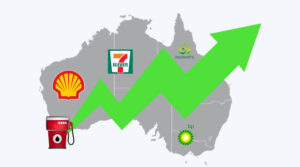So let’s explore more concrete expansion strategies and tools you can incorporate. Because it’s not just about a new location or increasing your customer base. It’s about revamping your business model to scale your operations to the next level and set the foundation for long-term, sustainable expansion.
Creating a Strategic Plan
According to the Australian Bureau of Statistics, about 35% of small companies (20-199 employees) do not have any strategic plan or policy. This number drops to 11% for larger organisations. Needless to say that if you want to become a sizable business, you might want to mimic them. You can start by defining and documenting a solid business plan.
There is no one right way to create a plan but it is advised it contains some core components such as mission, target customers (target market), current financial performance breakdown (revenue streams and costs) and trends over time, flagship products and upsell or cross-sell products, and key partners.
If you are considering expanding into new areas, you can add new market and customer due diligence to your plan to help build and execute successful marketing efforts. Try answering the following questions:
- Who are the target customers in the new target market?
- Who are the service providers we are competing with?
- How can we differentiate ourselves in our value proposition?
- How do we communicate this to our potential customers?
Enquire about Better Deals with Your Vendors
Small business owners have to be scrappy and look for savings opportunities everywhere they can. Expansion is an expensive effort yet could provide you with a chance to achieve savings long-term.
New customers or new products or both means that you will be increasing your order with your suppliers; More employees means that you’re adding more people to your company’s fleet card, corporate credit card, and health insurance agreements. It’s an opportunity for you to negotiate a better deal or upgrade for a better vendor that could more effectively support your expansion plans.
Vendors want to establish and maintain relationships with growing businesses – their clients’ growth equates to larger contract size down the road. Thus, you have more leverage in this negotiation. Make sure you re-evaluate your fleet card vendors, for instance, as you might be able to sign up for vendors or deals you once weren’t qualified for.
Get Serious about Going Digital
Small businesses using digital tools just 10 hours per week experience a 27 per cent increase in their revenue. Now, ‘going digital’ isn’t anything new. But for small or new businesses, it’s a difficult and intangible goal since they are often overwhelmed with putting out fires almost every day.
So how could going digital actually benefit your business today, rather than in 1-2 years? The answer is to focus on areas with low-value, time-consuming tasks.
Employee expense management, for instance, is a common area that could easily be automated. Speak to your vendors about how they can help streamline your invoice/employee receipt management. For your company fleet, consider using digital GPS tools to keep fuel costs in check. You may also want to consider implementing a more comprehensive and digital CRM tool to help you engage with your growing customer base. Here are some free tools for small businesses recommended by PCMag.
Leverage Government and Industry Resources and Support
The Australian government provides significant support resources to small businesses. They host workshops, provide templates and guides, and offer financial support to small companies with potential. For example, they provide a helpful checklist to ensure nothing falls through the cracks while you prepare for such an important transition.
The government recently invested $2 billion into creating a ‘Securitisation Fund’ to provide loans to small businesses through smaller banks and non-bank lenders as well as a ‘Business Growth Fund’ which enables big banks and funds to take equity stakes in small businesses.
Small businesses employ about 50 per cent of the Australian workforce and make up 33 per cent of the GDP. The government has to be invested in supporting them. So be proactive about receiving the assistance specifically designed for you.


